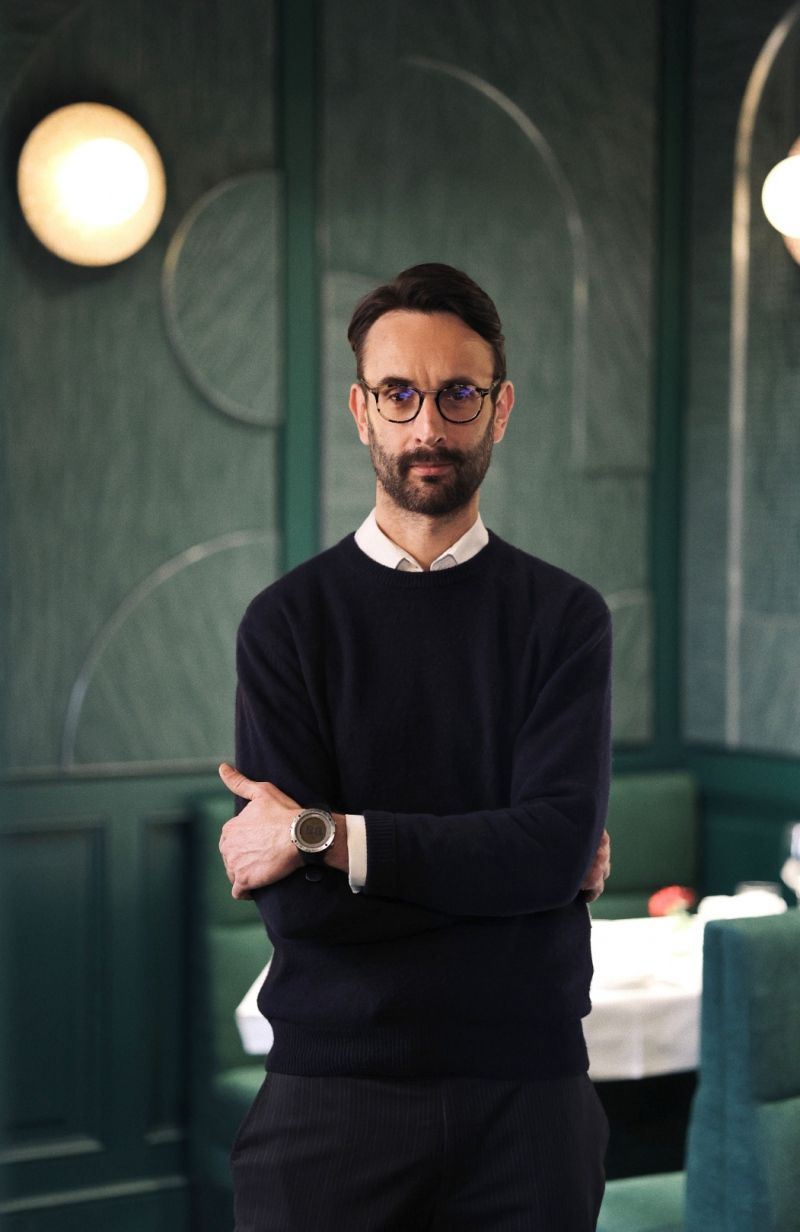
How to Design Successful Restaurants
Architect Kacper Gronkiewicz Suggests
Architecture is an applied art, but this does not mean that there is no room for creativity. On the contrary, it is precisely the works in which ingenuity and unfettered imagination can count on success. The secrets of his projects are revealed by Kacper Gronkiewicz, a well-known architect and author of many renowned interior designs, including restaurants, and finally, the special guest of the Architects’ Dinner held in Gdynia on 11 June this year.
There is a growing number of restaurants and catering establishments in Polish cities that attract attention with their architecture and interior designs. This is undoubtedly enforced by the high competitiveness prevailing in this sector. But not only. It should be remembered that we also increasingly like to celebrate food in a unique setting. The harmony of exquisite flavours and good architecture is a proven recipe for a successful dinner, family dinner or business lunch.
In practice, it turns out that good restaurant design is just as important on the road to business success as a properly composed menu, an efficient manager or a talented chef. How to design a restaurant well? Is there a proven recipe for restaurant design? Such questions are best answered by someone with not only years of experience behind them, but also successful restaurant designs.
Kacper Gronkiewicz, an architect from Warsaw, has many restaurant projects to his credit. Worth mentioning is Butchery & Wine, a restaurant repeatedly awarded the Bib Gourmand distinction by the cult international gastronomic guide Michelin, the Aura bar full of non-standard solutions, the Foton drink bar bathed in greenery, the restaurant in the Europejski Hotel or Le Braci, full of Italian flavours and design ideas. The latter project, incidentally, was shortlisted for the ‘Dezeen Awards’ as one of the 20 most beautiful restaurants in the world.
Is there a one-size-fits-all recipe for a well-designed restaurant? Not likely. It will always be an art of compromise and choices between the constraints imposed by functionality and architectural creation.
Architects are practising applied arts, so they have to engage their creativity in such a way as to create a design that is beautiful and functional at the same time. We live in a world full of limitations, and you have to combine them in such a way that you remain free,” says Kacper Gronkiewicz.
EVERY RESTAURANT MUST HAVE ITS OWN UNMISTAKABLE STYLE
It is often the interior that determines the uniqueness of a restaurant – apart from the menu and the quality of the food served, of course. Not surprisingly, each project should have an individual style, framed by a coherent concept.
Butchery has always been about grilled meat. Daniel Pawełek conquered Warsaw with his steak, and now he is conquering the heart of Gdynia. Hence the ubiquitous motif of the grill, or the grate on which the meat sizzles. The colour scheme refers directly to the name, and the op-art motifs to participation in the culinary process on the model of the viewer’s participation in the process of creating art,” explains the basic elements of the interior concept of the Butchery & Wine restaurant in Gdynia by its author, Kacper Gronkiewicz.
This attention to the originality of solutions can also be seen in his other ‘restaurant’ projects. In Warsaw’s Le Braci, the idea of sustainable development was materialised – part of the interior of the old establishment (bar, furniture, lamps) was recycled, and the hallmark became… broken porcelain. broken porcelain. A pile of broken plates, which seem to wobble and threaten to fall, has been placed on the wall in the lobby, creating an eccentric decorative element.
When I designed the Italian restaurant Le Braci, I was inspired by photos of dishes sent by the owner. Only that he was inspired by the dishes and I was inspired by the plates. Sometimes the muse is the daughter of enlightenment, sometimes of reflection, and sometimes of chance. Whatever works! – explains Kacper Gronkiewicz.
In the Aura bar, on the other hand, the designer introduced elements of fine craftsmanship, typical of the venue’s location.
Designers of restaurant interiors should prioritise individuality and ingenuity. Following current, fashionable trends does not always work. The design simply has to have that ‘something’ that becomes a magnet for customers.
Poles are very open-minded, because if they go to a restaurant, they expect it to have been worthwhile. And this applies to both the food and the interior, because it is increasingly appreciated that the culinary arts need an aesthetic setting. We architects are in the business of designing what the English call: experience. It’s no longer just about rumination – restaurant guests expect more and don’t care if it’s classic or modern. It should be coherent and flow from what is nowadays called brand character,” concludes Kacper Gronkiewicz.
KACPER GRONKIEWICZ SPECIAL GUEST AT THE ARCHITECTS’ DINNER IN GDYNIA
Kacper Gronkiewicz, who has been running his own architecture and interior design studio since 2007, was one of the special guests at the Architects’ Dinner – an original series of meetings organised by the OKK! PR agency for lovers of architecture and good design. His appearance in this role was no accident. It was Kacper Gronkiewicz who designed the interior of the Butchery & Wine restaurant in Gdynia, which hosted the event on 11 June. He was accompanied on stage by Wojciech Trzcionka, editor-in-chief and managing director of the Design Alive magazine, and the meeting was hosted by Olga Kisiel-Konopka, owner of OKK! PR.
On this occasion, the Butchery & Wine restaurant was visited by many distinguished guests interested in news from the world of architecture and design, but also keen to exchange experiences. Among them, one could see the renowned architect, Jan Sikora, or Daniel Pawełek, the owner of Warsaw restaurants (Le Braci, Butchery & Wine, Koneser Grill, Rozbrat 20, Kieliszki na Próżnej), to which Butchery & Wine in Gdynia also belongs. Interestingly, this is the first restaurant owned by the Ferment Group to be located outside of Warsaw. Adam Świerzewski, rector of the Academy of Fine Arts in Gdańsk, also graced the event with his presence.
It is worth mentioning that the partners of the Gdynia edition of the Architects’ Dinner were the iHome, Parkiet Hajnówka and 2tec2 companies. In turn, the Orska brand sponsored jewellery, which was the prize in the competition organised during the meeting.
Want to read more great articles you can use? Visit www.trnusa.com





Recent Comments